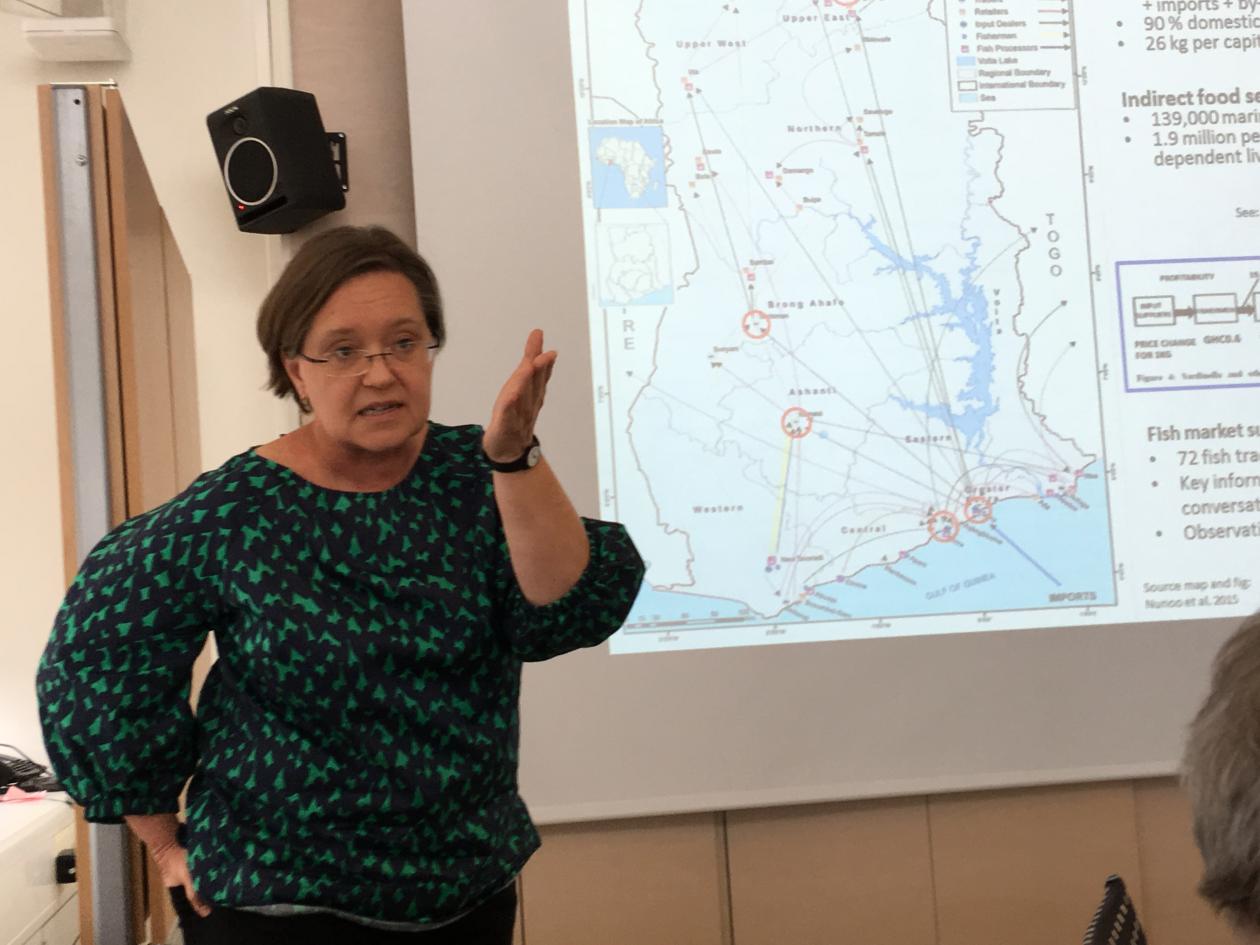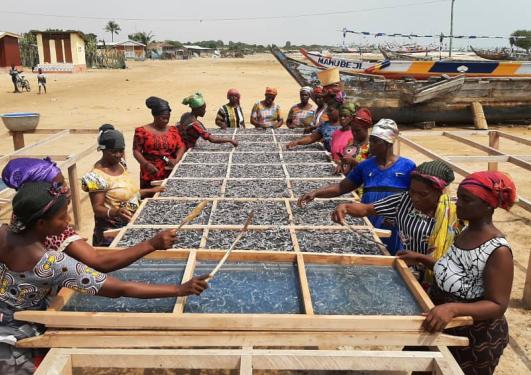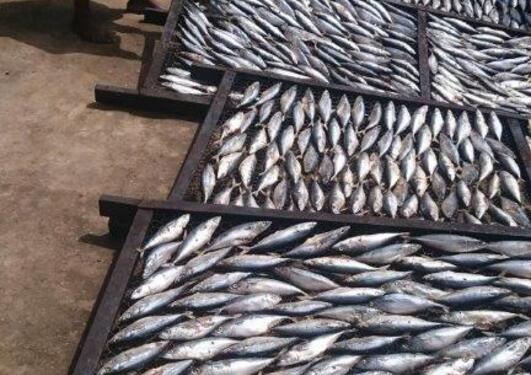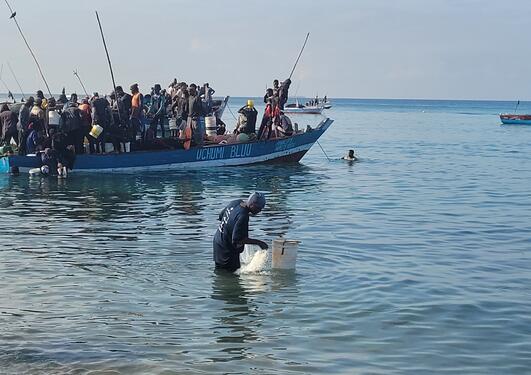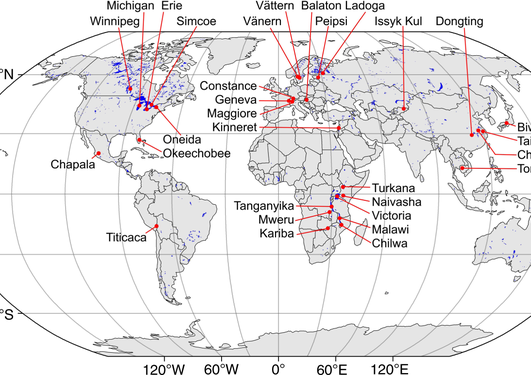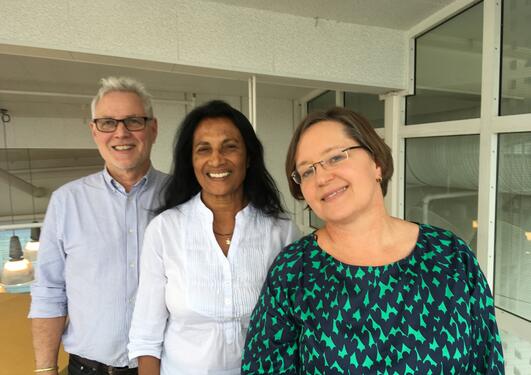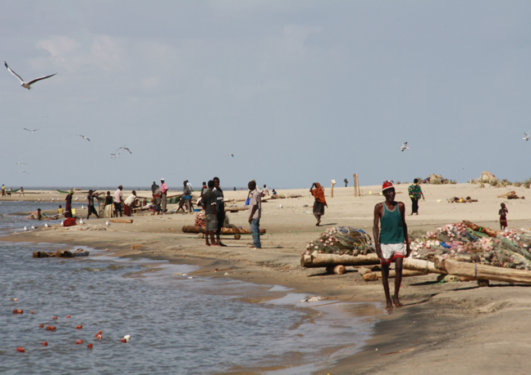Small fish research awarded in SDGs call
The SmallFish4Food project by University of Bergen researchers Jeppe Kolding and Ragnhild Overå is one of only 12 projects globally and five Norwegian projects to be awarded with funding through the SDG Pilots Call of the Global Research Council, with funding supplied via the Research Council of Norway.

Main content
The SDG Pilots Call is an ambitious cooperation between eleven national research councils in Africa, Asia, Europe, and Latin America. This is the first time such a project has been carried out and there were more than 200 concept notes supplied for funding, of which about half were invited to submit formal applications. Read more about the Norwegian recipients of funding from the SDG Pilots Call.
“Small fish for food and nutrition security in Africa” is the full name of the project led by Jeppe Kolding and Ragnhild Overå, or SmallFish4Food in the short form. In the award letter the project is described as “very relevant” and “excellently conceptualized”. On 5 September there was an official launch of SmallFish4Food and its sister project SmallFishClim, with Rector Margareth Hagen providing the opening speech. SmallFish4Food is one out of only 12 projects globally to be funded via this call.
Riding a wave of small fish
“We’re just grateful to be riding a wave. Hitting the right spot at the right time in combining fish with nutrition, and the importance of small fish. The African Development Bank issued a policy brief in March 2024 which stated that if we’re to get more food from the sea, there is only one way to go – with small fish, i.e., foods at lower trophic levels. This is unanimously agreed upon in scientific circles,” says Kolding and believes that this combines with increased attention to human health.
He and Overå stress that they’ve been fortunate enough to connect with the right research partners and that interdisciplinarity has always been key in their projects.
“We’re indeed riding a wave of increased interest in small fish. This is also part of a larger trend in global food systems. A debate that’s not just about fish, but all kinds of food. In short, sustainable food systems. We also see it in discussions for plant-based diets and eating less meat. But fish has not been as high on the agenda. We now see that fish is on the way up and we’re part of this wave. It’s nice to contribute to putting sustainable fish consumption on the agenda,” Overå says.
Small fish most sustainable food
Kolding points out that small fish production is more sustainable as it doesn’t lead to increased use of water resources or fertilizer compared to other production methods.
SmallFish4Food builds on the LEAP-Agri project SmallFishFood. What’s the main difference between the new and this previous project?
“Not much. The only prerequisite in the call was that the new project must build on an existing project,” explains Kolding.
Yet they point to two new key elements in the new project.
“There is more of a spotlight on fishmeal production, or perhaps rather the competition between fish feed and human consumption of fish meal, and the nutritional content of wild fish compared to farmed fish,” says Kolding.
“Also, we’re studying the consumer market more closely for this project. In the past, we’ve had a spotlight on nutrition. However, much of my research stopped at the market and in the value chain once the fish had reached the market,” says Overå adding:
“This time we also want to find out a lot more about non-wild fish, i.e., aquaculture and fish farming. We will look at what perception different consumer groups have of this. This is mostly a middle-class market. What fish do they eat? At the same time, we will compare the nutritional content of wild fish and farmed fish, and competition between small fish for food and feed.”
Farmed fish more expensive than small fish
According to Kolding farmed fish is generally three times as expensive as small fish.
“People have become snobs. In the past we ate herring and potatoes. Now we eat farmed salmon. Even in Africa. You just don’t serve small fish to visiting guests,” he says.
The most relevant local fish for farming in many African countries is tilapia.
“Fish farming is also promoted by Norway, who is pushing fish farming and aquaculture in the global south,” says Kolding pointing to Norad supporting such projects actively.
SmallFish4Food is awarded 611,000 Euro, of which the Research Council of Norway contributes with about half, or 310,000 Euro. The Norwegian part of the funding is equally split by UiB and Institute of Marine Research, where researcher Marian Kjellevold is active in the project. She has long been engaging in research collaborations with Overå and Kolding, including its predecessor SmallFishFood.
Food security is key part of project
Why has the topic of small fish been for better nutrition and increased food security been so underrepresented in global food programmes?
“That’s a good question, but that’s the way it is. If you study food tables around the world, you will find that cattle are divided into categories everywhere. Even chicken has many subcategories. But fish is only fish. Not what type of fish. Skinny. Oily. Filet. Parts of fish. Seafoods only account for 1-2 per cent of what we eat. And even this small number is decreasing,” Kolding says.
“Which is interesting on several levels as there is a strong flashlight on the ocean and waters now. The key role of ocean governance is often mentioned. This is out of sight and therefore out of mind for us on land. What happens far out in the ocean is not something we’re very conscious about. There is a lot of activity that is invisible when you view it from land,” Overå says.
“Yet it’s a paradox that when you drive in the country and see the tractors ploughing the fields: How much biodiversity is being destroyed? At the same we’re trawling only one per cent of the seabed. This points to two separate ethical views for land-based and ocean-based food production,” Kolding explains.
Closing the knowledge gaps
How can SmallFish4Food contribute to closing the knowledge gaps and provide the information that is needed? Not the least for policymakers to make the right decisions.
“This is all about making use of these resources for health promotion measures to persuade policymakers. African governments rely on the dominant global discourse of “blue growth”. We want to convey a message that it’s not only the economic resources that are important for the population, but the health potential too. What can we do to utilise this more? We want to focus on improving the quality of small fish products, so that these become more attractive to consumers. We must turn the value perspective from pure economics and biological conservation to human nutrition and health,” says Overå, who also is critical of the Norwegian fish farming industry.
“The ambition to increase Norwegian salmon production fivefold by 2050 needs to be put in a global food security perspective. When you consider the problem with small fish for feed: Is this the best way to utilize these food resources? We are becoming very short sighted in Norway, unable to see that the salmon swimming in our fjords are completely connected to other global food systems, only to make money from incredibly capital-intensive food production,” she says.
“Norwegian salmon has been a financial success. But what has it cost in other ways of measuring values? The whole discourse is about to change. We must not feed the entire population with farmed fish. The world discourse is about to move from economics to food security,” believes Kolding.
Exploring the value chain
What activities do you plan now that the project has been officially launched?
“We will look at the value chain. Where does the small fish make its way? Where does it land? How much goes out locally and internationally? We will create a balance sheet model with an auditing system of how much waste there is in the value chain. Who gains and loses? Look at more analyses of products that we did not finish with in the previous project. Ragnhild will look at the entire trade route,” says Kolding.
What changes do you hope the project can contribute to and are there particular policies you want to influence? And how do you believe these changes in policy can be implemented?
“We will look at individual countries’ policy on food security and try to influence it nationally. All countries have food security policies and strategies. Our aim is to look at how to integrate small fish into these,” concludes Jeppe Kolding.

